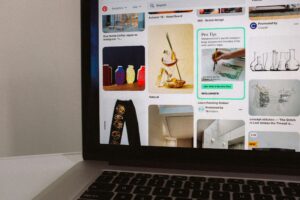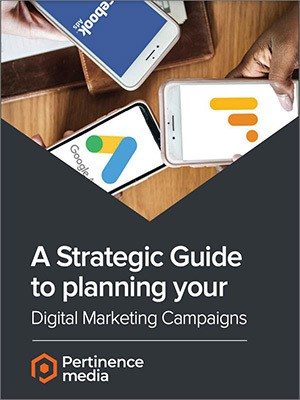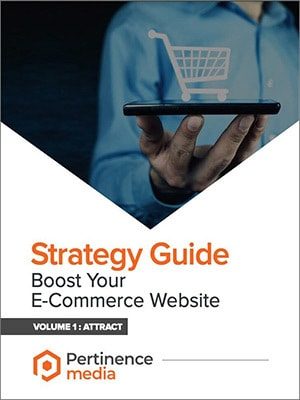With more than 2 billion monthly active users, Facebook is arguably one of the most effective ad platforms for whoever masters the ad manager. Its targeting precision and its numerous campaign opportunities offer a range of interesting services for all companies that want to work on their reputation or communicate differently with their customers.
At the heart of the ad manager are the campaign objectives. These dictate how your campaign will be optimized by Facebook’s algorithms. Poorly choosing them often means a campaign that will not achieve the desired goals.
Let us give you some advantages, disadvantages and tips to better understand the subtleties of the most popular Facebook campaign objectives: conversions, traffic, product catalog, lead generation and store visits.

These 5 big objectives of Facebook campaigns are often used without really knowing the difference and the impact of the use of everyone in your digital strategy.
1 / Conversion objectives
A simple rule is to favor conversion objectives for campaigns aimed at promoting products or services sold online. Thus, Facebook’s algorithms will have the clear and precise mission to optimize your campaign’s impressions to generate a maximum of conversions, i.e. purchasing or booking, with the invested budget.

Your conversion campaign can take many forms, without restricting its performance in generating results. Go for the 16: 9 banners for B2B communications, a video if you have quality content, the carousel to invite users to browse multiple thumbnails or the collection with canvas full screen to promote a unique mobile experience.
If the conversion objective restricts the visibility of your ads, they will however only be shown to users most likely to take action within the radius you have chosen thanks to your targeting criteria (places, interests, age, etc.).
The conversion objective is that which guarantees you the best return on investment, if your campaign is optimized as it should. We encourage you to complement your Facebook advertising efforts with a traffic objective campaign, for example, to ensure you get impressions and clicks with this type of campaign further designed for visibility and interaction.
2 / Traffic objective
The traffic objective will allow you to generate both a large number of impressions and actions proving the interest of the user. This type of campaign is preferred to develop your brand awareness or the promotion of products and services that are not sold online but for which information is available.
Collect clicks on your links, the view of your landing pages, or simply the display of your ads in your targets’ feed to start or strengthen the relationship with your prospects and customers.
It’s with the click-through rate that you’ll be able to evaluate the performance of your traffic-targeted ads. If the average of Facebook ads peaks at 0.9% of click-through rates, you can easily double, even triple this statistic with a well-designed and accurately optimized advertising.

For example, if Facebook has historically always been in love with videos, know that its sights will be set more and more on carousels.
Certainly, the scope of videos is usually quite spectacular as long as they capture the attention of surfers with an ever decreasing period of concentration
However, it can be very interesting to look at creating a carousel for a much more original storytelling. Tell your story or that of your new product in 4 to 5 images and encourage the user to become an actor of the rhythm of narration. He can scroll the thumbnails at his own pace to fully understand the story you want to tell him.
Feel free to be original in your Facebook ads, especially if you are addressing an audience already familiar with your brand and your products.
3 / Catalog sales objectives
The product catalog is a good alternative to conversion objectives campaigns as it offers e-commerce features. Being able to be in the form of a banner, a carousel or a collection, it highlights a selection of products likely to appeal to your audience.

We will particularly approach the carousel because it is the type of ads that we like the most for its performance and its aesthetics! You can promote your entire range of curtains, stickers or meal kits for the same investment as for a banner showing only one of your products. Display the title of your product, its price and discount to arouse the curiosity of your audience while giving him the opportunity to scroll through your thumbnails.
The icing on the cake, the product catalog is not reserved for e-commerce companies!
You simply need to have a single page per product, visuals hosted on your site and a price to display.
For the lucky ones, you will be able to directly export your inventory to generate a flow of products to integrate on Facebook. For example, Shopify, WooCommerce, and Magento offer this feature. For others, you will have to be a little more patient to generate a product feed containing the following information: unique identifier of the product (you can use your SKUs), availability (in stock, available on order …), state (new, refurbished, etc.), description (maximum 5000 characters), image link (600 x 600 pixels ideally), product link (on your website), title (500 characters maximum), price (cost and currency), GTIN (International Trade Identification Number of the item), and article mark.
This work, which can be tedious, is nevertheless necessary to give you access to this type of campaign very effective to boost the visibility of your products and the relevance of your online advertising. Believe us, the reward is worth the risk!
4 / Lead generation objective “Lead Ads”
The lead generation objective offers the possibility of integrating an pre-populated form of the contact’s information into your Facebook advertising. This type of campaign is typically used for B2B campaigns interested in being featured on Facebook. However, some B2C campaigns can also be very successful thanks to this objective, like the Discount Locations for cars and trucks!

The main purpose of these campaigns is to collect information from prospects (name, surname, email address, telephone number, or any other useful information) in exchange for a service.
It can be a download of a document that will enlighten them on a subject, such as an e-book on the benefits of a Storage solution offered by ProContact Informatique or a checklist of the most useful kitchen utensils for a great cook.

The lead generation campaign can also be used to offer a “free pass” to your target audience. For example, you can take advantage of these built-in pre-populated form campaigns to give your targets the opportunity to request quotes for car rentals or to register for your event without leaving Facebook.
The questionnaire pre-populated with available information on the prospect’s Facebook page (the questionnaire remains nonetheless editable, to fill in his business address instead of his personal address, for example) then becomes your contact or automated registration form and greatly facilitates the action phase.
Our advice is to inquire only about the fields that are essential for the proper management of these leads. For example, you do not need to ask for the zip code if it’s not necessary for your business purpose.
Our advice to you about the using this type of campaign is to take the time, upstream, to think about how you will manage your generated leads. What could be more frustrating for your users than to trigger their interest but not act upon for weeks?
These leads should be treated with as much attention as any of those generated by any other sources or marketing channels. Rest assured, new platforms now allow you to automate the management of your leads between your systems.
5 / Store visits objective
The goal of store visits is in line with the desire to make drive-to-store traffic a priority.
The challenge of this type of campaign is to promote the visibility of your store locations to people in their vicinity, which have an interest in the type of products or services you offer.

This objective may seem attractive, but know that this type of campaign is still developing and offers mixed returns for the moment. Indeed, the reports on the visits and the optimization of the campaigns for store visits, nevertheless primary objectives of these campaigns, are still being tested.
So you can set your site pages and have the option to select this campaign objective in your ad manager, but can only choose the optimization of your ads for the daily unique reach. The daily unique reach is a setting that ensures that each of the targeted people will not see your ad more than once a day, to avoid redundancy of your messages to your audience.
This campaign option remains a possibility to consider if you are making local marketing your hobbyhorse. You will be able to access your advertising results by store visits and analyze the statistics for your marketing orientations.
We hope that this little overview of the objectives of the Facebook ads manager will have helped you in your strategic choices of Facebook campaigns.
We will come back in more detail about other settings of Facebook campaigns in an upcoming article! Feel free to send us your feedback or ask questions to guide our next topics according to your expectations!






